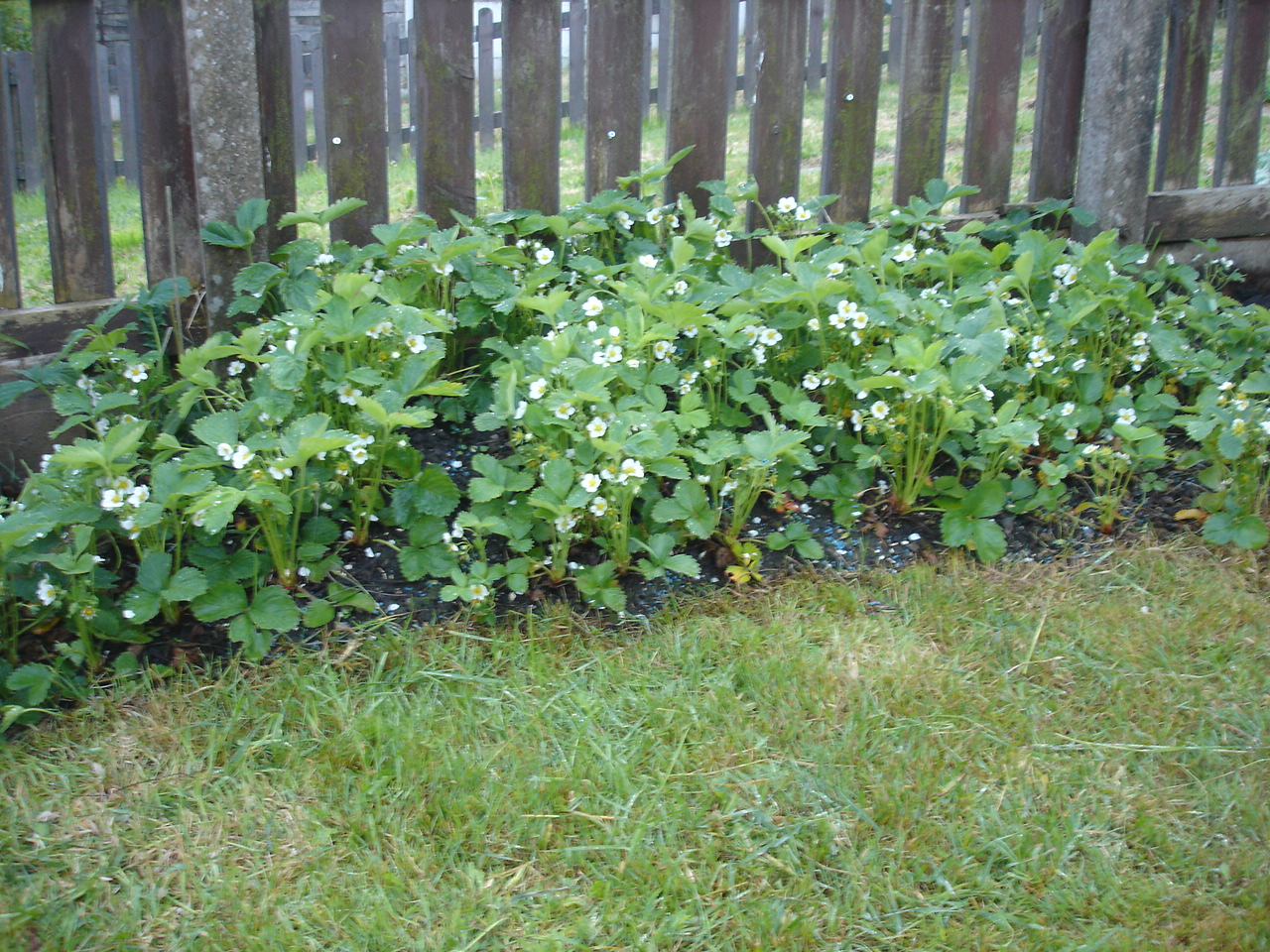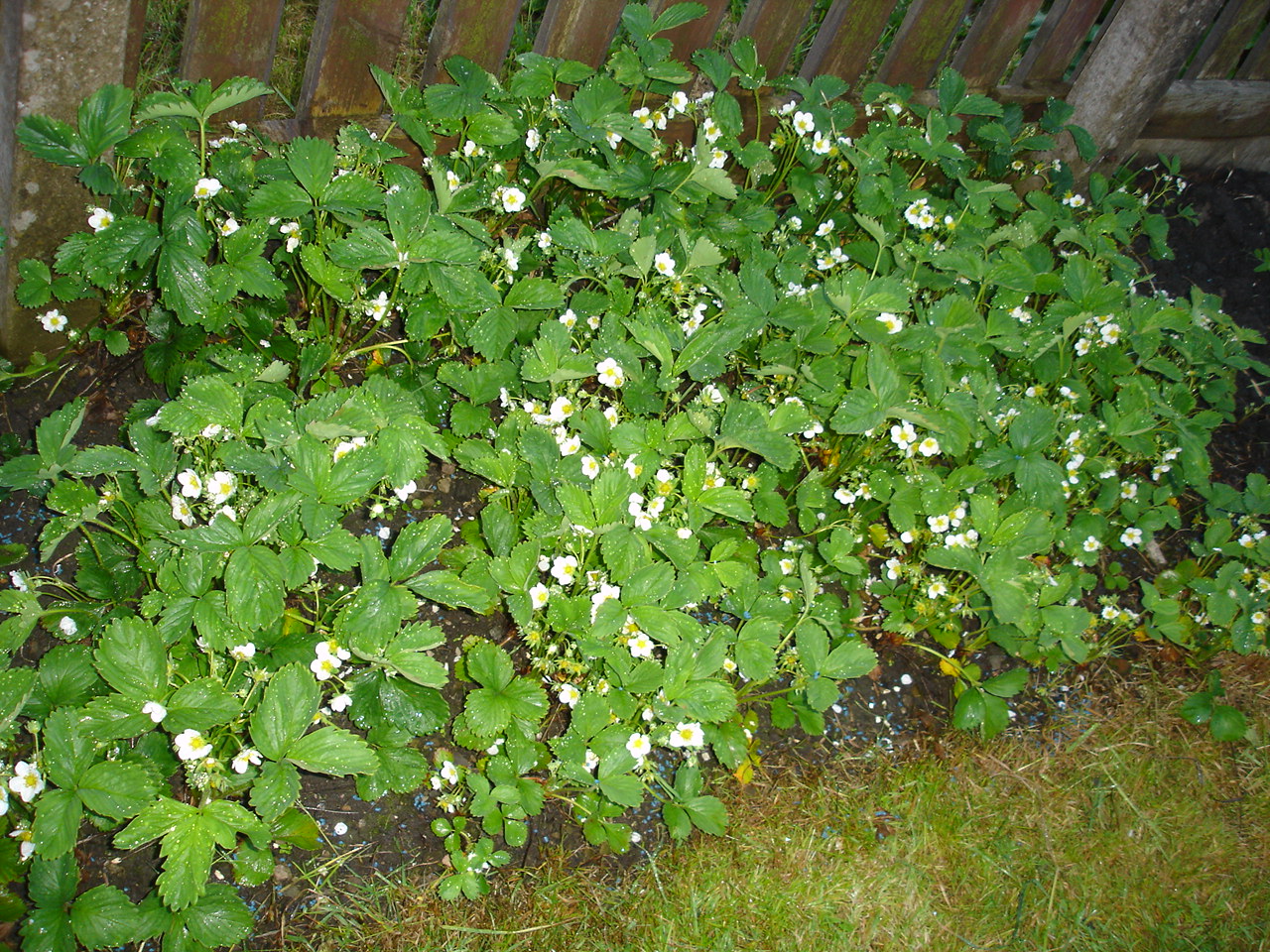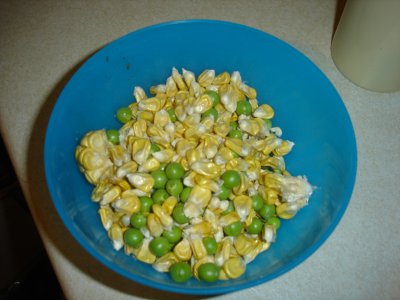Free seeds for next year
For next years fruit and veg, late summer/early autumn is ideal for getting your seeds, cheap and often for FREE!
Peapods - The white powdery covered pods that have only half grown or been caught by the colder nights, etc, are ideal seed material. Simply pick them off, pop them open, into a dish and shake the dish every day for a couple of days (to stop fungus growning on them).
Once they have dried out, place the now dried peas into a brown paper bag (I use the bags I keep from the fruit and veg markets every week) pop them into a drawer and hey presto, next years peapod seeds are all ready and waiting to be planted out again next year.
SAVING - At £2.50 a pack, that's £5 frugally saved, plus the time to go and buy them and driving out to the garden centre etc.
Sweetcorn - I started my sweetcorn too late this year, as I did last year, but when the time came to plant them outside of the greenhouse, the colder nights had already set in. Last year they didn't survive, the same thing will happen if I plant them out this time.
Anyhow, of course they will produce no seeds, the reason they were late planting this year is because there were simply no sweetcorn seeds for sale for over a month.
At £3 a pack, which contained 20 seeds, they are not cheap.
However, at my local market, I can pick up three fresh corn on the cobs, for just £1.
They alone will supply enough seeds for my entire street!
Again, let them dry out on the cobs, pick them off and place them in a dish to dry out. After a couple of days, brown paper bag them up and store them away, ready for next April.
Don't pay over the odds for your seeds next year, use waste fruit and veg that you won't eat this time around, save the seeds, dry them and store them, then put them away.
The more frugal amongst us, spot when fruit and veg is coming to the end of it's season and pick them up cheaply (sometimes for free) at local markets, then dry the seeds ready for next year.
Why does tap water prevent plant growth?
Last year, my tomato plants reached the dizzy heights of 5-6 foot tall and gave me fruit right up until late October.
They were grown in the greenhouse and watered with water from an outdoor storage container, ie, rain water.
This year, I have only been able to water them using tap water.
They took an age to start growing, when I finally got some seeds coming through, I split them all up into large pots.
I had one seedling left over, so I planted that in my border, on the off chance that I might be able to grow a tomato plants outside (I have never been able to before).
The hot weather vanished as soon as the hosepipe ban came into force and along came the heavy and persistant rain.
I continued to water the plants in the green house using tap water.
The greenhouse tomato plants are scrawny, weak and yellow leaved at between 1-2 foot tall, there are a few flowers and a couple of little tomatoes starting to grow but nothing on the scale we had last year.
In contrast, the one seedling I planted out by my peapods as a test, has shot upwards and outwards. This has been left to the rain to keep watered.
Not only has "Sydney" got more than 30 flowers on him, a quick look underneath the main leaves reveals already fruit is growing.
His stalk is almost an inch thick, compared with the greenhouse plants of less than a centimetre, big deep green leaves with not a yellow leaf in sight.
I also planted out in borders this May, lettuce, beetroot, carrots, potatoes and some sprouts. (May and June were hot dry months here, so these were watered regularly with tap water).
I have had not one single lettuce, carrot, beetroot or sprout come up!
Not until a week of heavy rain in early July did the potatoes start to show, after three weeks of more rain they have filled my grow box.
I ran a test last week, planting some lettuce and sweetcorn seeds in the greenhouse.
I watered one half with tap water and the other half with rain water out of a standing container.
It took just three days for shoots to come through, when watered with rain water - those watered using tap water haven't had a single one come through in six days.
So what exactly is going into our tap water? If it prohibits plant growth, what is it doing to animals and humans?
Almost strawberry time
With Wimbledon fast approaching, I've been in the strawberry patch, giving it a final weeding and making sure that slugs hiding under leaves in the soil are not ready to eat them, as they did last year!

The best thing to counter slugs is dryness, they sit at the edge of the strawberries in longer grass, then come out when it rains or once the fruit starts to appear.
Clearing any weeds away and cutting down the grass at the edges will get rid of the slug cover, drying them out in the open. A few well placed slug pellets should do the trick to catch the young ones and protect around the edges.
As you can tell, I was pretty annoyed last year to see a mass of big, red, juicy strawberries, but when it came to picking them, most had been eaten from underneath by slugs.
With the dry weather this year, I have kept the patch watered, as many of this year's plants are "new" baby plants, grown from the shoots of last years older plants. I am told that after three years the older plants start to leave smaller fruit and in less quantity, so when the shoots came off last year, I lifted a few of the six original plants I put in and made sure the shoots were spread out.
It sounds like a lot of work, but it really wasn't, just make sure the new shoots are in the soil, let them spread then cut the stems where they join the new plant.

Not bad going for six old strawberry cuttings I picked up from Dad's allotment, I now have more than 30 strawberry plants!
Seeds - planting out fruit and vegetables for 2010
With April showers fast approaching, it's the time of year when I turn to choosing which plants I want to grow from seeds.
Seeds are an invaluable resource, where ever possible I'll be using a thrifty alternative to buying them in packets. I find it easier to obtain seeds from fruit and veg that I buy fresh every week on my local market greengrocers (they have less storage room so produce is normally fresh and locally sourced).
Fruit and vegetables:
- Tomatoes - easy ones these. When seeds are bought in packs, they can cost anything up to £2.99 for 20 seeds - buying a tomato from my local market, I can get around 50 seeds for just 20p
I am planting out regular and cherry varieties, using the recycled greenhouse I got last year.
Last year's late planting in the greenhouse, yielded a good crop of both cherry and regular tomatoes right into early November, so early planting should see us through the hotter summer months (he says hopefully!) - Sweetcorn - I spotted them growing on one of my Dad's friends allotment last year, (I was there to rob some free comfry) they were growing to around 9 foot tall planted in triangles, in sandy untreated earth, in an uncovered area open to winds.
I planted some into seed pots as late as September last year, to see if I could grow them in the greenhouse, they came on a treat with simple watering.
I planted them out in the October and they grew to over 2 feet tall before the colder weather got them, so early planting this year will help.
Fresh corn on the cob from my local market - 50p for around 100 seeds. - Potatoes - I am going for two varieties in 2010 - King Edwards and the smaller new potatoes.
Last year I grew some king edwards, but a neighbour's fuscia bushes roots, grew in my border like a spiders web and killed them off. It did however break up my soil and now I have excellent fine soil where last year it had lots of clay in it.
For 2010 I will be planting them out in my "veg box" where I normally grow my peapods. The soil there is very thick and clumpy, so even if they don't do well, it will leave me with a box of fine soil ready for 2011.
Seed wise, quartering up some old potatoes and leaving them in a carrier bag in the greenhouse for a few weeks should get them to root, they will then be ready for planting out - you can of course save potato peelings and dip them in rooting powder and plant them out, which proves to be just as successful. - Strawberries - for the last two years, my six little cuttings I got from my dad's allotment have come on well, producing plenty of fruit, and spreading well, now I have about 20 plants for this year. I am concerned though, as I have been reliably informed that around every 3 years, I should dig up and destroy the older strawberry plants to leave room for the younger ones to grow and develop.
This way, the fruit thats produced remains firm and fresh and keeps the strawberry plot in tip top condition?
I plan to leave it well alone this year, just shaving it around the edges with the lawn mower to keep it in check, I will mark the older plants later in the season and remove them around September time, hopefully, the newer plants will root out in their place and next year's crop will be good? - I have two remaining bays to fill with some topsoil and plant out - not sure what to do with them, as they get half a days sun, half a days shade.
In my borders I will hopefully have some sweetcorn planted out, there will be room for carrots and the veg I have never successfully grown - beetroot!
The soil is fine there now and the fuscia roots have been dug up and won't be coming back, so maybe it's time to try again?
Blackberries - last year, alongside the house where we have extended it, an old blackberry branch I planted about 3 years ago sprouted up and produced around 4 big bowls full of blackberries!
I cropped it slightly and pinned it to some lats I screwed onto the fence, which allows it to creep along and support itself. I am hoping it will develop into a hedge that helps the local wildlife and birds as well as providing me with plenty of fruit.
My thinking is, that it will be an excellent burglar deterrant?
With a full year to go at with my recycled greenhouse, I should have a more profitable year as regards fruit and veg, I have divided the borders up into 6 bays in the back garden, two are free as yet to plant out in.
The grapevines (cuttings I took when I moved the greenhouse from the garden it was left in neglected) grew well last year, in milk bottles in our kitchen, then once the greenhouse was in place, continued to do well, getting as high as two feet tall.
However wether they will continue or "come back" to life this year, remains to be seen.
I am told they shut down in winter, like old dead twigs, then come to life once the heat returns the next year?
We shall see, but whatever happens, I am hoping that my trusted comfry water, fed to all the plants once every five waterings, will fire all my seeds up and give us a bumper crop.
Helping birds through the deep winter freeze
Our little feathered friends are out there in the big winter freeze, many starlings have young to feed, young blackbirds are leaving their winter nests, wagtails are still around as are robins and traditionally winter birds that frequent the UK at this time of year, it's vital that food supplies for them continue.
Food supplies are relatively easy to provide and can also be used to reduce the amount of rubbish thrown away in your general waste bins.
Christmas nuts:
In our house at christmas, we always have a tub of salted and dry roasted peanuts. Not in large quantities, but enough to always have some left over after the event.
Instead of throwing these away as they go stale in their little tubs, we crush them up together and mix them up with some warmed up fat/dripping/lard and put this mixture into old flora margarine tubs. Once they have cooled down, the now solid blocks are put outside for the birds.
Waste fat - dripping - lard:
We use a chip pan in our house, chips, etc, all taste better when cooked in lard or dripping.
When the fat needs changing, it used to be poured into old coffee jars and thrown our with our general rubbish.
For the past 12 months, it has been melted and poured into old margarine tubs, crushed nuts or old stale biscuits are broken up and mixed into it, then it is cooled and placed outside for the birds to eat.
Birds need fat content, it helps bulk them up and it helps with their plumage.
Bacon:
Old stale bacon rashers sitting in your fridge are an ideal food source for our feathered friends. Bacon rind, bacon fat and the bacon meat itself, are excellent fodder.
Rather than put out full rashers for the birds, cut them up into tiny pieces with scissors.
This way the local cats will not eat the bacon and bigger birds will not get all the food.
Plus, when in small pieces, the birds, who don't have much time to stand and eat remember, can take a piece of the bacon and fly back to their nest and eat it there or give it to their young, before a bigger bird or a predator comes along.
Bread:
Even stale bread is a good food source for birds. Shreaded into small pieces, birds will often leave this easy food source for a day or so, until it is softened by the weather.
Fruit:
Birds eat berries - a fact we all seem to forget when it comes to winter feeding.
Pomegranate, chopped up and put out for birds as a bit of an experiment, turned out to be a spanking food source for our local birds.
As christmas fades away into the distance, any fruit that's beginning to turn can be cut up into small segments and put out.
Lemons, apples, oranges, satsumas, etc, all will be welcomed food sources for birds this winter.
Positioning any food you put out for birds is paramount.
Avoid putting food out near trees, shrubs, bushes, hedges, etc. Anywhere that cats and other predators have cover to hide in wait for birds is a bad location.
You don't need a bird table, an old chopping board or an old roof slate are just as good, but position it out in the open, the centre of a lawn, etc, giving birds a safe place to eat.












 12/09/10 09:14:58 pm,
12/09/10 09:14:58 pm, 

Recent Comments